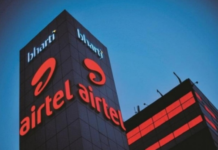By Nishant Arora
New Delhi–Founded in 2004, Facebook — on track to hit two billion active monthly users this year — is now the fifth-largest US firm by market capitalisation (exceeding $400 billion) and owns the world’s most popular apps: WhatsApp, Instagram and Messenger.
On the other hand, popular image messaging platform Snapchat’s parent company Snap Inc grew to $25 billion in market capitalisation after its mega IPO in March. Launched in 2011, Snapchat today has a little over 160 million active daily users.
That Facebook is going after Snapchat is not news, but the battle has now become somewhat ugly. At its recently-concluded F8 developer conference in San Jose in the US, CEO Mark Zuckerberg launched “Camera Effects Platform” to encourage augmented reality (AR) effects — a move reported by The New York Times as Facebook’s “brazen heist” over Snapchat.
It is Snapchat which has popularised animated AR selfie masks and facial filters.
Facebook has also added Snapchat-style “Stories” and camera special effects to all its core social apps: Facebook, Messenger, WhatsApp and Instagram.
Facebook has also added Geostickers to Instagram, offering location-specific tags in two cities (New York City and Jakarta) that users can paste over images. Snapchat launched Geofilters back in 2014.
Why does a giant need to “copy” or borrow features at all when it can innovate at will?
“Facebook is not just learning/borrowing features from Snapchat (mostly to Instagram), but it has been borrowing features from other messaging apps too. For example, Facebook Messenger learned a lot of features from WeChat (China) since last year’s F8, such as creating branded accounts and letting brands use it for customer services,” Xiaofeng Wang, Senior Analyst with US-based market research firm Forrester, told IANS.
The new group chatbot feature announced at F8 this year is also very similar to what “Line” (Japan) has already offered.
It’s not unusual in the tech industry to create similar features inspired by other companies. Line and WhatsApp picked up the idea of a voice messaging feature from WeChat too.
“Legally, it’s hard to prove ‘copy’. But Facebook has been launching new features to retain user-activity and attract younger generations as Snapchat attracts the younger generation better than Facebook,” Wang noted.
Originally launched by Snapchat, the “Stories” feature shows photos and videos shared in chronological order that disappear after 24 hours.
Facebook introduced something similar in its app Instagram last August. Today, Instagram has over 200 million people Stories daily — more than even Snapchat.
Today, Messenger, WhatsApp and the main Facebook app have all added “Stories” feature (In WhatsApp, it is called ‘Status’).
“Like other internet giants, Facebook leverages the power of the ecosystem, same as Tencent or Alibaba in China. It’s not the battle between Facebook and Snapchat, rather than ecosystem strategy vs a single-platform strategy,” Wang told IANS.
According to Anoop Mishra, one of the nation’s leading social media experts, most of the product-based companies involve their research and development team to keep a close eye specially on the features implemented by surrounding chasers.
“Features like Poke (2012), Slingshot (2014), Bolt (2014), One-Hour Messages (2015), News Feed-Only Posts (2016), Quick Updates (2016) and Instagram Stories (2016) are somehow imitated, snatched or neatly cloned in recent history by Facebook from Snapchat,” Mishra told IANS.
“This could be a part of their strategy to influence more and more active users and keep themselves ahead of the surrounding competitors which helps them gain internet ad revenue share as well,” Mishra added.
Unfortunately, the biggest irony with online e-services is that there is hardly anything from the offerings perspective to sustain differentiation.
“However, execution is what will matter in the end. In this case, if Snapchat has a better execution, it will grow big or else Facebook could make it irrelevant by looping in features on features,” Faisal Kawoosa, Principal Analyst (Telecoms) at CyberMedia Research (CMR), told IANS.
Is this open “dadagiri” on the part of Facebook or is everything fair in love and technology?
“I would like to call it a strategic ‘dadagiri’ rather than ‘open dadagiri’. Why I’m saying strategic ‘dadagiri’ is because these things not only help one gain market share but also prepare grounds for acquisition and mergers,” Mishra emphasised.
For Kawoosa, it is not about copying or “dadagiri” but what works best.
“Ultimately it’s about what makes the application more productive and meaningful, thus increasing the chances of keeping users engaged,” Kawoosa told IANS.
Zuckerberg even tried to acquire Snapchat for $3 billion in 2013, but its co-founder Evan Spiegel refused the offer. Now Spiegel is engaged in a different kind of battle with Facebook.
Spiegel, who was in the news recently for his purported disinterest in expanding business to “poor countries” like India — something that created an uproar in social media and was later refuted by the parent company Snap — must actually have a fresh look at India.
There are over 200 million WhatsApp users in India while Facebook has nearly 166 million.
Snapchat? A mere four million, according to media reports.
This is where Spiegel needs to focus as the Indian market is among the world’s largest — and growing — when it comes to social media use. Ignoring the “rich” millenials in the country will only harm Snapchat as Facebook will gobble them up. (IANS)







